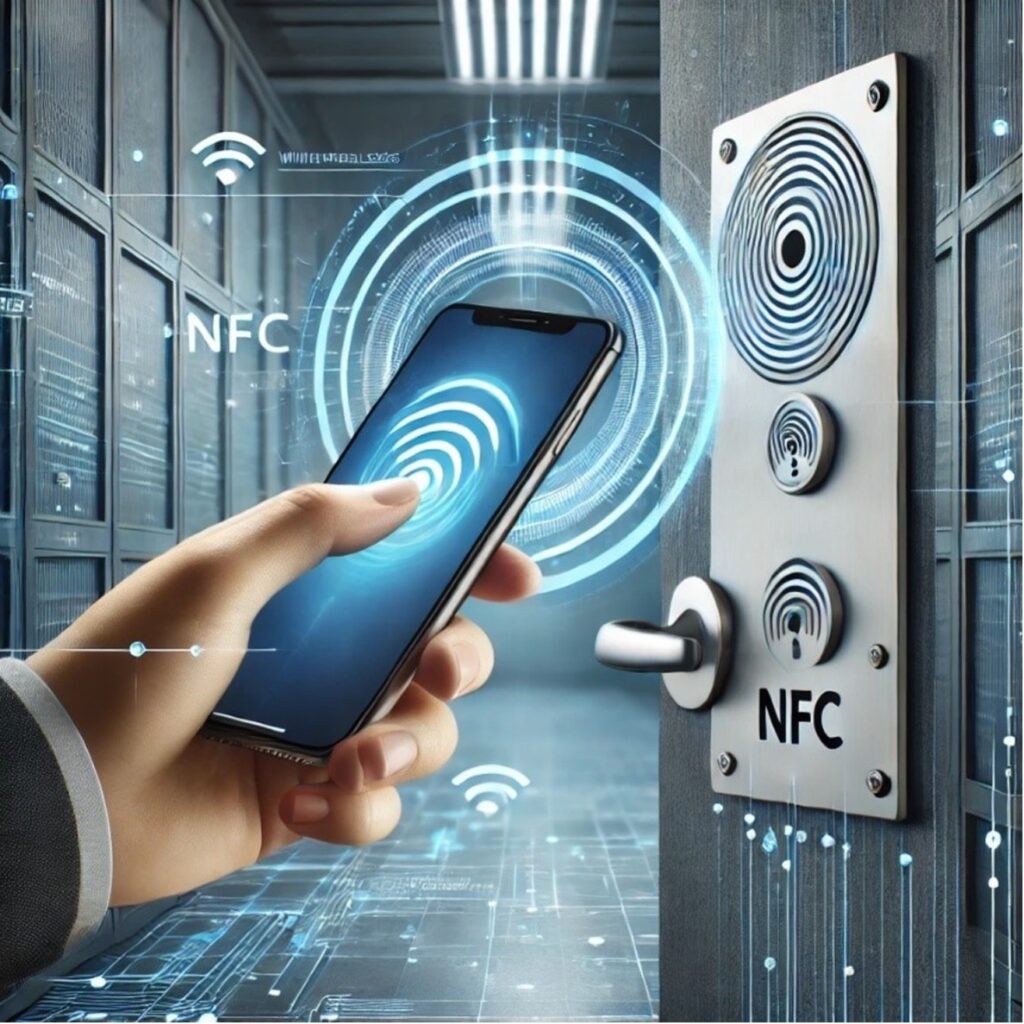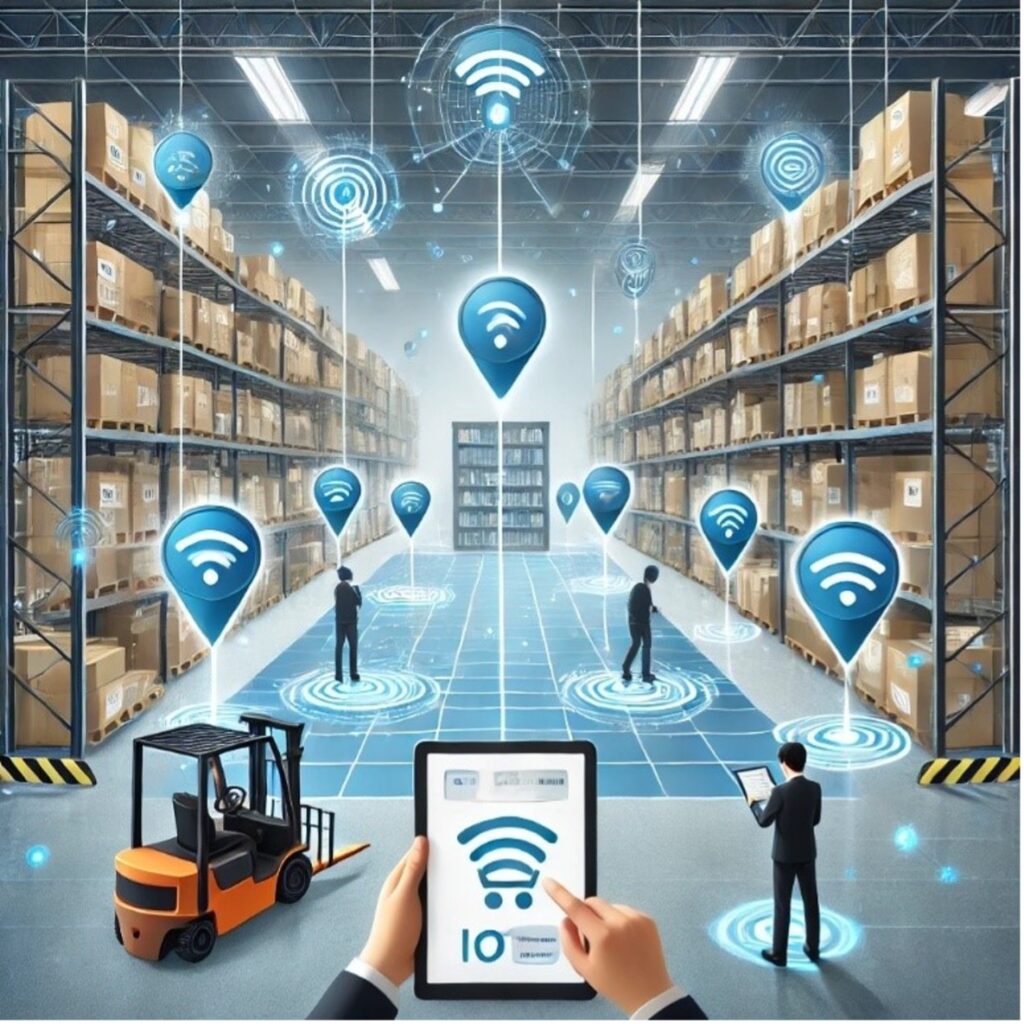RFID (Radio Frequency Identification) has for years been a key technology for tracking assets, i.e., physical assets such as machinery, equipment, materials, products in transit or warehouse stock, in industry and logistics.

However, with advances in technology and new requirements for connectivity and scalability, more efficient and cost-effective alternative solutions are emerging. Technologies with the greatest deployment and potential include NFC (Near Field Communication), BLE (Bluetooth Low Energy) and LPWAN (Low Power Wide Area Network). These solutions are revolutionizing asset management, logistics and real-time monitoring, offering significant advantages over RFID, especially for SMEs.
NFC: short-range tracking and authentication
NFC technology, already popular in contactless payments and mobile devices such as smartphones, tablets and wearables equipped with NFC chips, is finding increasingly relevant applications in industry and logistics.

Advantages of NFC over RFID
- Secure authentication: with advanced encryption, NFC is ideal for access control and security management in manufacturing and logistics environments.
- Compatibility with mobile devices: the ability to use smartphones and tablets as NFC readers reduces the need for investment in dedicated hardware.
- Accuracy and ease of use: NFC requires close interaction for reading, reducing the risk of misreading or interference.
Practical applications in different fields
- Electronics: unique identification of components during assembly.
- Mechanics: digital recording of machinery maintenance.
- Plastics: quality control on production batches.
- Warehouse logistics: staff authentication and access to inventory data (real-time visualization on quantity, location, status, and inventory movement).
BLE: real-time monitoring and increased range
Bluetooth Low Energy (BLE) is a wireless communication technology designed to provide efficient connectivity with low power consumption.

Advantages of BLE over RFID
- Increased range: unlike RFID, BLE allows data transmission over longer distances, up to tens of meters.
- Continuous monitoring: BLE beacons can transmit data in real time, making it possible to constantly monitor assets and personnel.
- Integration with IoT: BLE easily integrates with IoT ecosystems, facilitating data collection and analysis.
Practical applications in different fields
- Transportation logistics: monitoring the location of vehicles in real time.
- Agriculture: tracking of agricultural equipment for efficient fleet management.
- Food: real-time monitoring of environmental conditions (temperature and humidity) inside vehicles or containers used in refrigerated transport.
LPWAN: long-distance tracking and energy efficiency
Low power wide area networks (LPWANs) are the ideal solution for monitoring assets distributed over large areas, with a focus on energy efficiency and long-distance data transmission.

Advantages of LPWAN over RFID
- Wide coverage: LPWAN enables asset tracking over distances of kilometers, making it ideal for logistics and supply chain.
- Low power consumption: LPWAN devices can run for years on a single battery, lowering operating costs.
- Scalability: the ability to manage thousands of devices with minimal infrastructure makes it perfect for SMEs.
Practical applications in different fields
- Food & beverage: remote monitoring of temperatures in warehouses.
- Warehouse logistics: tracking shipments between distributed warehouses.
Cost comparison between technologies and operational scope
Technology | Hardware Cost | Infrastructure Cost | Operating Cost | Scope |
RFID | Medium-high | Medium-high | Medium | Short (up to 10 meters) |
NFC | Low | Low | Low | Very short (up to 10 cm) |
BLE | Medium | Medium | Medium-low | Medium-long (up to 100 meters) |
LPWAN | Medium-High | Low | Very low | Long (up to 10 km) |
Comparison of investment costs for SMEs of different sizes and sectors
Technology | SME Electronics (1,000 items) | SME Mechanics (5,000 items) | SME Food (10,000 items) | SME Logistics (20,000 items) |
RFID | €15.000 | €40.000 | €50.000 | €100.000 |
NFC | €5.000 | €15.000 | €25.000 | €50.000 |
BLE | €10.000 | €30.000 | €40.000 | €80.000 |
LPWAN | €12.000 | €35.000 | €45.000 | €90.000 |
Why should SMEs adopt these technologies?
The adoption of NFC, BLE and LPWAN by SMEs offers tangible advantages over RFID, including:
- Cost reduction: NFC and BLE use inexpensive hardware, while LPWAN minimizes large-scale communication costs.
- Increased scalability: these technologies make it easy to adapt to growing needs without costly infrastructure upgrades.
- Easy integration with IoT: The three solutions can connect to cloud platforms for advanced analytics and process automation.
Conclusion
RFID, while still used in many sectors, is gradually giving way to more efficient and versatile technologies. NFC, BLE and LPWAN represent more scalable, cost-effective alternatives that can be easily integrated with IoT systems. SMEs, in particular, can benefit enormously from these technologies, improving asset management, optimizing logistics and reducing operational costs. The future of industrial digitization lies in smart, connected and sustainable solutions, and these technologies are set to play a key role in this transformation.
